The story of famous Raeucherhaus in Ahrenshoop
This is not only the story about “The Raeucherhaus” (German “Räucherhaus”) and the Schönthier family who run this cosy restaurant in Ahrenshoop at the Baltic Sea. This is also a story about a great place for boat-trips in historical Zeesen boats and what happened in Ahrenshoop during the dark times of the former East Germany. About the Stasi and “Cat-Head-Willi”. About a location with history and stories, new beginnings, courage and the fortune of the hard working. And of course this story will tell you why you should come and stay here and have an unforgettable trip.
After asking where we can eat good fish, a local kindly lets us in on the secret of the Raeucherhaus at Althagen Harbour; a district of Ahrenshoop. „Just around the corner and down to the harbour“, comes the ladies prompt answer. Almost as if any other alternative would certainly be out of the question.
In Ahrenshoop, there are of course other places where you can eat fish, but this place is special. A tavern with a view of the small tranquil harbour and its array of modern yachts and historical Zeesen boats in which holidaymakers sail along the bay. A harbour where the ducks wait to be fed by a traditional Ahrenshooper fisherman and the last rays of the setting sun bathe the reeds, first in a glowing red and then in a deep blue in the evening. And where the cosy holiday apartments and rooms, belonging to the Räucherhaus, make for a wonderfully romantic getaway.
Raeucherhaus: This place is special
What could be better than to fall into your nearby comfortable bed, after a good meal and a last glass of beer or wine and hear nothing but the quiet ripples of the water and the sound of birdsong at the window in the morning? To wake up and see the harbour from your balcony. That is what makes the Raeucherhaus and the Ahrenshoop Harbour so special. But not only that. It’s the people and their stories, which make this place unforgettable. Especially Susanne and Andreas Schönthier, who have turned the once shabby and dreary place into a jewel. With incredible guts, skill and the fortune of the hardworking.
They seized the moment to build up something and not to hesitate and wait until others would do it before them. Because, during the GDR there was nothing here. Or nearly nothing but a sandy harbour bed in which a flooded boat lay and a dilapidated embankment consisting of loose concrete slabs about to fall into the bay. Not a pretty sight but symptomatic to the consequential downfall of the worker and farmer state.
Susanne Schönthier is wearing a nautical striped shirt, a mischievous smile, twinkling bright eyes and is sitting with us in the rustic and cosy tavern in her Raeucherhaus. Fresh flowers are standing on the large and heavy wooden tables and light from the round hanging lamp is reflected on to the wooden ceiling by the lacquered tabletop. Paintings of ship voyages and a variety of fish images can be seen hanging on the walls, as well as a scantily clad mermaid who looks cheekily down upon the guests from above.
She’s the boss: Susanne Schönthier inside the cozy Raeucherhaus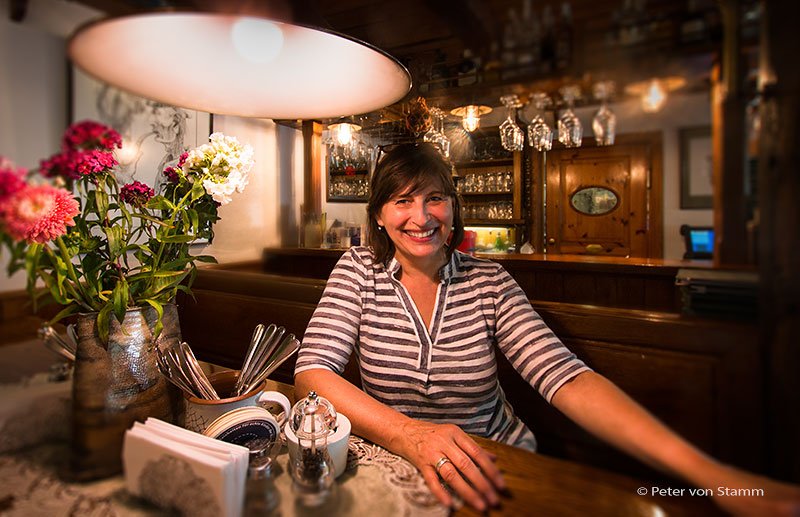
The Raeucherhaus: On the generous menu there are delicacies…
On the generous menu there are delicacies such fish fond with root vegetables and slices of Bodden (inner bay) fish; poached cod and Bodden zander steamed whole. The homemade Baltic Sea herring and salmon in puff pastry. Fish gourmet, what more could you ask for?
The room reminds me of a dockland pub, only cosier and a lot more tasteful in its interior and deco. At the bar the beer is flowing and charming, nimble as well as ever- friendly staff whirl around between the tables. They are all ‚Mecklenburg Deerns’ (girls), who are hands on and have their heart in the right place. It’s nice to see them in traditional dress. Sympathetic, honest, good; the staff learns from the best who also happens to be their boss. A boss who is full of beans, happy and always has something friendly to say. You feel more than at home at the Räucherhaus.
Susanne Schönthier looks as though she has always been a landlady, but it’s not the case. With that cheeky smile again, she tells us about how it all began and how life was at the harbour all those years ago. Her dream was to become an artist. Her training at the Art Academy at Heiligendamm was planned, but her husband-to-be Andreas was not. Head over heels in love, a young woman from the Baltic Sea island of Rügen fell in love with the fisherman from Fischland. She left her island and came to Ahrenshoop to work as a seamstress.
During the GDR being a seamstress meant a steady income. There were no boutiques like today, so you had your clothes made. Then came the reunification and everything changed. Seamstresses were no longer needed; the fishing society in which her husband had been working was dissolved. The price of fish plummeted. The future did not look rosy, but the Schönthiers proved themselves to be movers and shakers. „Scaremongering was not an option“, says Susanne Schönthier, „We had to sell the fish that Andreas caught somehow“. Andreas Schönthier fished and his wife Susanne fileted the fish. In the evenings she would go from restaurant to restaurant until she had sold every piece of cod, zander and eel that she had to offer. The day after their daughter Pauline was born, Susanne Schönthier was standing at the fish stand. „I just couldn’t keep away“, she explains and grins.
The Raeucherhaus: How business started
At some point the Schönthiers had the idea of the restaurant at the harbour. Why sell the fish at restaurants when they could sell it themselves? They began to build and called their tavern Räucherhaus (meaning Smokehouse) because in the early years, the freshly caught fish was smoked at the back of the house (evidence being their broad chimney). And where today’s second guestroom is, was the original shop. Later on, there were further renovations. The upper floor became two apartments and the smoker ovens were relocated. They were moved outside around the back of the house, right next to the weir and a selling area with tables and benches. The irresistible scent of freshly smoked fish would linger over the harbour from 10am as the ovens were opened and the crowds gathered.
Parallel to building work on the house, Andreas started tidying up the harbour. He freed the harbour bay of sludge, laid a sludge pond and organised support beams for sheet piles to be rammed into the bed. He then built a jetty long enough to accommodate his sailing boats and also giving enough space for the tourist passenger ships to pass by. He set up benches everywhere in which holidaymakers and locals could watch the goings-on in the harbour. To simply sit with a fish sandwich, a coffee or an ice cream from the kiosk nearby and just relax. Life is good! Locals drop by to walk their dog, cyclists take a rest on the bench, and holidaymakers drink a coffee or try Susanne’s delicious homemade cake after their walk on the bay.
Over the years, the Althagen Harbour has developed to become the new centre of Ahrenshoop. Andreas set up a meeting place, which also houses the Office of Voluntary Harbourmasters. If you take your breakfast on the terrace, like we did, you can watch how he checks the boats in the harbour for docking fees, always-in the company of his hunting dog Gina. And in that time the business grew and finally the Schönthiers became increasingly successful. The takeaway Fisch-Katen, up in the village and on the main road next to the Edeka supermarket also had a raving review by the gourmet magazine Feinschmecker. It also happens to belong to the Raeucherhaus.
The Raeucherhaus: Run by the Schönthier family
Today the family Schönthier have 30 people working for them. From the cleaning squad to the skipper, the head of the smoker, the waitress, the takeaway manager and the cook. They are all one team. Helping each other out through thick and thin. Most of the employees of the family firm are also employed throughout the winter. Something that is not taken for granted when it comes to Ahrenshoop being a tourist region heavily dependent on seasonal work. Two of their five children also work at the company. Pauline, who was born as her mother swapped her needle and thread for a fish knife and Marie who stands for a whole new generation of Ahrenshooper. A top class traineeship in the hotel business, international experience, married to an American and now back in her families company. The ambition and love of sailing gained from her father, the radiance, twinkle in the eye, cheeky grin and the black humour from her mother. And despite her success her feet are firmly on the ground. Just like her parents. And just like her parents, Marie’s honest and cheerful nature.
Captain Andreas Schönthier on bord of his historical Zeesenboat “Sannert”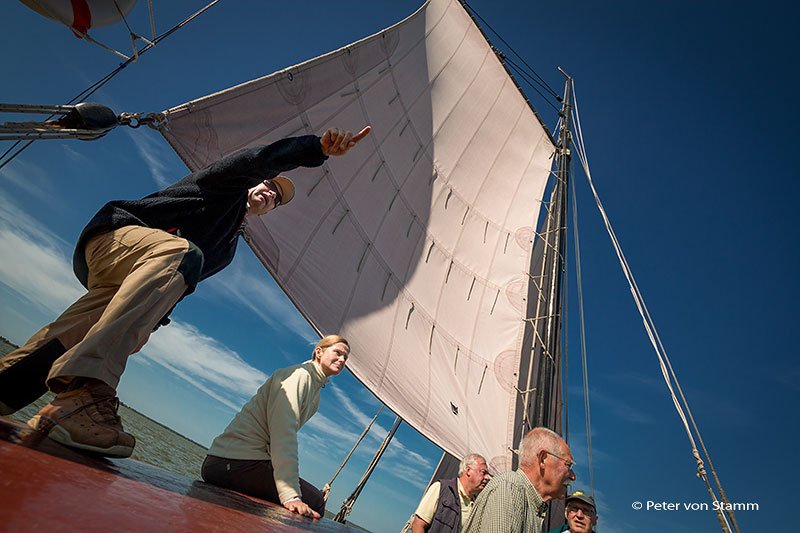
We meet up with Andreas who wants to take us on a sailing trip on his boat ‚Sannert’. Sannert means Sander in German and is the name of an almost 11 metre long and 3 ½ metre broad wooden sailing boat which sailed and fished the bay of Barth von Stapel for decades in 1912. Five captains sailed her in that time and since 1981 Andreas Schönthier.
With the sails down, bleached by the sun from brown to purple, they stretch over us in the wind. The oiled planks of the deck glisten in the sun. All the guests are on board, including Gena the hunting dog and constant companion of the captain. Slowly we sail out of the harbour in our 103-year-old boat and into the bay. Later on the mizzen, head and jib boom sails are put into action and the Sannert accelerates. A proud ship, as well as its captain, as he begins to explain. With the gaffe topsail being a full 90 m² in size, this makes his boat the fastest sailboat on the Baltic Sea. In 2014 the Sannert gained first place at the traditional Ahrenshooper Regatta, which takes place every year in September and is organised by the Schönthiers. At other regattas, the Sannert is always ahead of the rest.
Gina, the lovely dog of captain Andreas Schönthier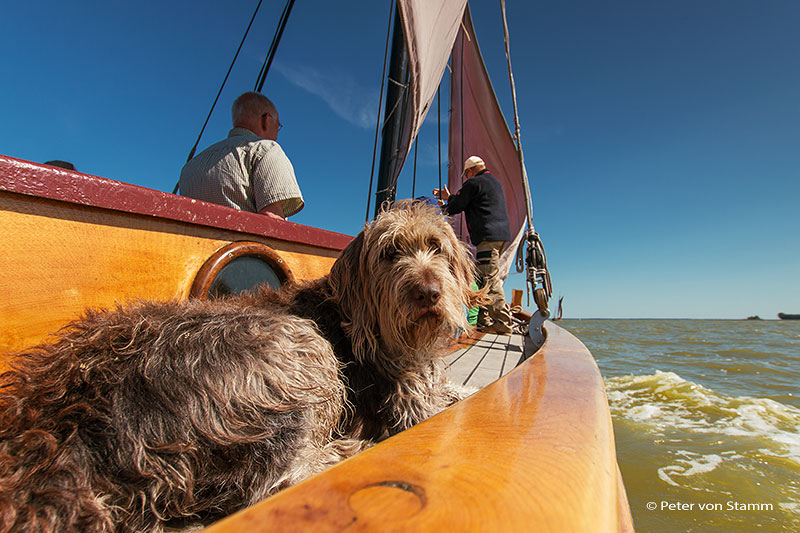
The ship sails windward, a nice feeling to glide along the water. Schönthier’s eagle-eyes, despite his sunglasses, monitoring the water, sails and the wind direction (by a small weather vane on the mast top), straightens his beige cap, emblazoned with the Sannert emblem and goes on to talk about the bay and its pitfalls. Many sailors underestimate the sudden changes in wind. Many of them capsize and every year people drown due to carelessness. Inexperienced and over confident sailors worry him; those who tend to oversee the red flags of his nets and destroy the expensive netting with their boats.
Even though he doesn’t come from the coast, Schönthier is an experienced sailor and knows what he’s talking about. At the age of 16, the son of a Huguenots family, he moved from his Saxony mountain-region home of Freiberg to the Baltic Sea. The freedom of the sea tempted him. He applied to the Nautical College Woodrow and topped his training with a Captains Patent for Deep Sea Fishing. But the system, which was dominated by the Stasi and corrupted, was not his cup of tea. As one of the regular posts at the Fisherman’s Cooperative at the bay came up, Schönthier took the initiative, quit his job and became a fisherman. Schönthier elaborates. On the sails of his boats (he bought Blondine – ‚Blondie’, a somewhat larger boat and 80 years old around 15 years ago), as with many of the sailing boats in the bay, is a black cat’s head sewn onto it. Every sail maker who passed the master exam was entitled to mark their sails with their own symbol. Hence, the well-known GDR sail maker Willi Gaeth from Rostock, earned the nickname Cat-Head-Willi.
The story of Cat-Head-Willi
In 1975 Cat-Head-Willi was fed up. Due to surveillance mania, the responsible body of the GDR had taken away his night-sailing permit for his yacht ‚Tornado’. He didn’t like that one bit. He took his wife and children and fled in his boat on 15th July 1975 over the Baltic Sea and into the West. The incident almost caused a war. Followed by two GDR Border Control boats, Willi Gaeth was lucky enough to be picked up by a patrol boat from the Federal Border Guards and was taken in. Several GDR warships undertook action to get him and his boat back. It was alarm-code-red on both sides and the situation was due to escalate. Only the appearance of two NATO fighter helicopters made the GDR give in and turn back. Cat-Head-Willi and his family had succeeded in fleeing to freedom. And the catheads? They had to be cut out of all the sails according to the GDR authorities. After the reunification Willi Gaeth returned and lives today in Zingst. His sails are still some of the best you can buy. And Andreas Schönthier is proud to let the catheads sail on his boats over the bay once again.
The cat-head sign
Others didn’t have the luck that Cat-Head-Willi had. And that, unfortunately, also belongs to the history of Ahrenshoop. After the building of the wall on the 13th August 1961, the only way people could escape the GDR was crossing the Baltic Sea. In Ahrenshoop; the famous and idyllic artisan’s village, with its wonderful thatched-roofed houses and one of Germany’s most beautiful beaches on the East coast. People tried to escape the inhuman regime. After sunset no one was allowed on the beach. Anyone whom the Border Patrol caught on the beach was seen as suspicious and a potential political refugee. Some managed to escape, others drowned or were picked up by the Border Patrol and locked away for years.
One of those who made it, is the author and journalist George Tenner; formally known as Schmidt-Kirstein. He lived with his mother as a weaver on a property near the high banks. After his first failed attempt in 1964 and a sub sequential one-year sentence in a Stasi jail, one night in October 1966, with his wife son and friend in tow, a renewed attempt to cross the Baltic Sea in a dingy took place. This time it worked. But Tenner’s mother had to answer for his escape. She refused to testify against him and was interrogated by the police and the Stasi so long until she left Ahrenshoop. The house and workshop in a top location was handed over to become property of the Commercial Coordination, in short ‚Koko’, a Stasi controlled secret department of the GDR Export Minister. At its head, the recently deceased Stasi Colonel Alexander Schalck-Golodkowski, whose job it was to create foreign exchange and provide western luxury goods to the top party bigwigs. Not only in Wandlitz but also in Ahrenshoop.
Ahrenshoop and the Stasi
Ahrenshoop and the Stasi. Firstly, the GDR Kulturband (Culture Bound) discovered Ahrenshoop as its own exclusive retreat, just for them. The chairmen of the Kulturband did everything to make sure that the GDR Holiday-Service and their holiday locations for workers had nothing (good) to say about Ahrenshoop. The simple folk were not wanted there. That was why it was forbidden for locals to accommodate holidaymakers. Only GDR citizens who could afford to book a room through the GDR travel agent were welcomed there as holiday guests.
The more citizens that left Ahrenshoop; be it before the division into the West, or by fleeing, the more ‚deserving comrades’ came to Ahrenshoop. Party cadres, followers, Stasi employees who were offered houses from ‚political refugees’ or those who had simply left. It wasn’t few who lived like kings. Until the reunification at least. After the fall of the wall came the orders to reassign houses and property. 80 % of the real estate in Ahrenshoop was affected. 80 %! Half of the applications were accepted. But not all the applicants had the patience to go through the weary court proceedings.
Our cozy bedroom in one of the Raeucherhaus apartments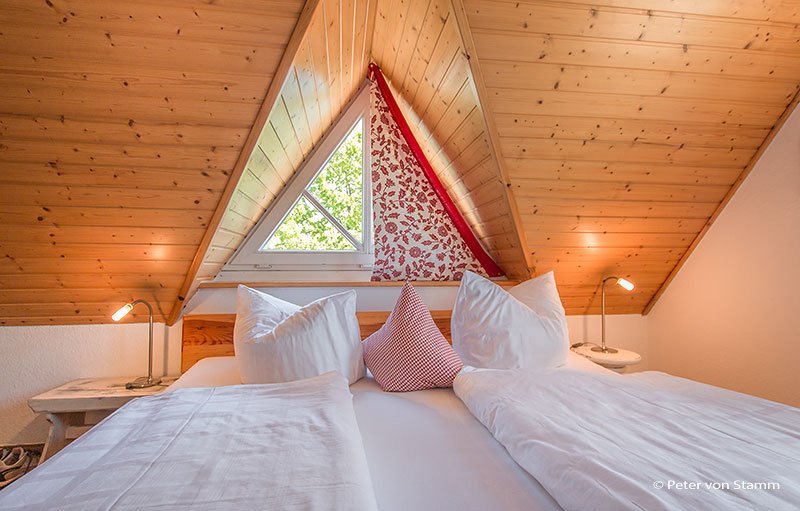
The Ahrenshoop author Agnes-Maria Griesebach had the patience. She had left already before the fall of the wall. The SED system being the reason. She had left her large beautiful house with its columns at the entrance and spectacular view opposite the Ahrenshoop ships church on the Paetowweg behind. But never forgotten. After her departure the Chairman of the GDR Block Party occupied it. Officially he had paid 22.000 Ost-Mark for the 2000 square metre house and its property. Financed from party funds. In 1991 he was sentenced to an 18 month suspended jail sentence and charged with embezzlement by the Berlin District Court.
Two incidents proved to be in favour of Agnes-Maria Griesebach but it took three trials after the former Stasi IM (unofficial member) and long-term representative of the GDR City Council made several appeals. After four years, the 83-year-old author could finally return to her old house. Three examples of the other side of Ahrenshoop. Stories that also belong to the history of Ahrenshoop and should never be forgotten.
Harbour-view from the balcony of our Raeucherhaus-apartment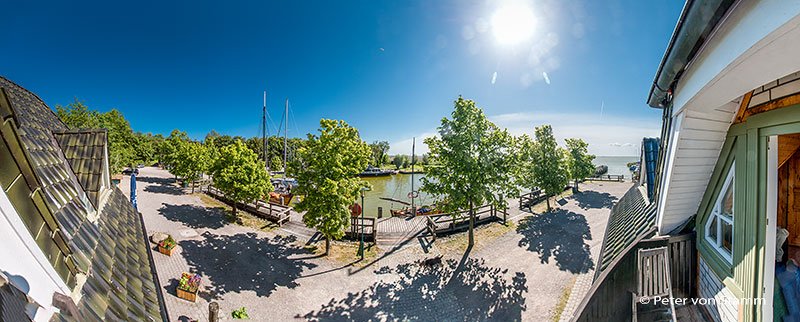
In the evening we are sitting in the Raeucherhaus and talking to the table next to us. Susanne Schönthier explains over a glass of wine, that the tables are especially large so that as many people as possible can sit together. When two or three couples come into contact there are automatically conversations. Often between East and West because everyone gets together here. We are sitting with regulars from Rostock who often come for the fish and because you can sit here so comfortably. At the same table a couple from the West. She is from Cologne and he is from deepest Bavaria and then there is us, from Hamburg. A colourful mix, good conversation and even though the opinions vary about the situation before the reunification, not everything was bad that happened in the GDR, that’s true. And that is what makes the Raeucherhaus in Ahrenshooper so special – it’s never boring. There was never an evening where we didn’t have stimulating conversation with strangers. At a location with history and stories, new beginnings, courage and the fortune of the hard working. Where you can sail with historical Zeesen boats and get away to a wonderfully romantic place.
Photography: © Peter von Stamm (all rights reserved)
Many thanks to Bianca Demsa for the translation!!
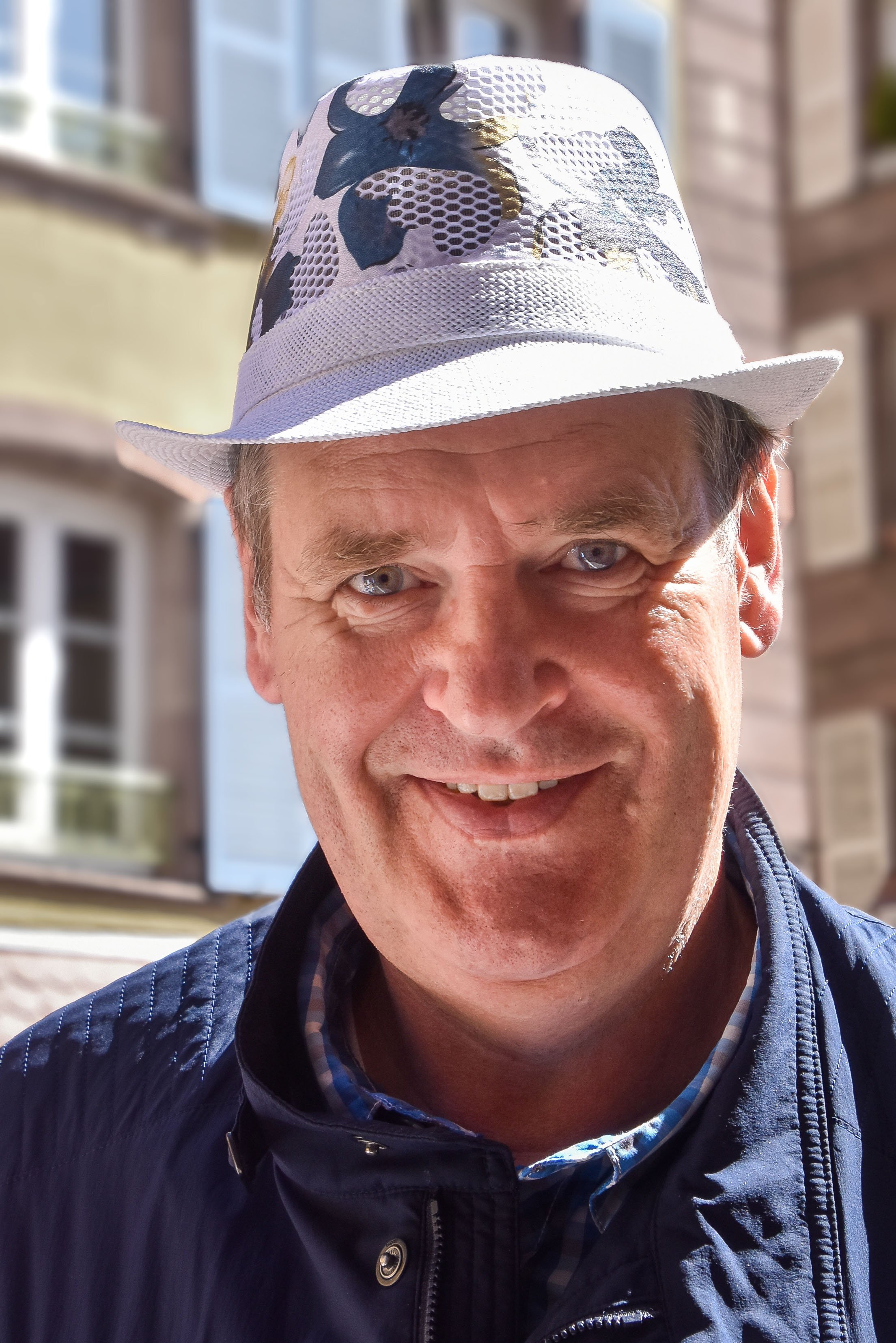
Journalist, Hörfunk-Autor, Podcast-Betreiber, Texter, Travel- und Hotel-Blogger, Fotograf und Content Creator
LinkedIn – kress – Xing – ApplePodcasts – GooglePodcasts – Spotify
Contact:
Räucherhaus Ahrenshoop
Hafenweg 6
18347 Ostseebad Ahrenshoop / OT Althagen
Tel: ++49 (0) 38220 – 6946
raeucherhaus@t-online.de
www.raeucherhaus.net
How to get there:
You might also like: The Amneron Swiss Mountain Hotel in Davos
Video-Link: https://petervonstamm-travelblog.com/the-ameron-swiss-mountain-hotel-in-davos/
Video-Link: https://petervonstamm-travelblog.com/the-ritz-carlton-in-berlin/
Why I love to stay at the Waldorf Asoria in Berlin
Video-Link: https://petervonstamm-travelblog.com/waldorf-astoria-in-berlin/

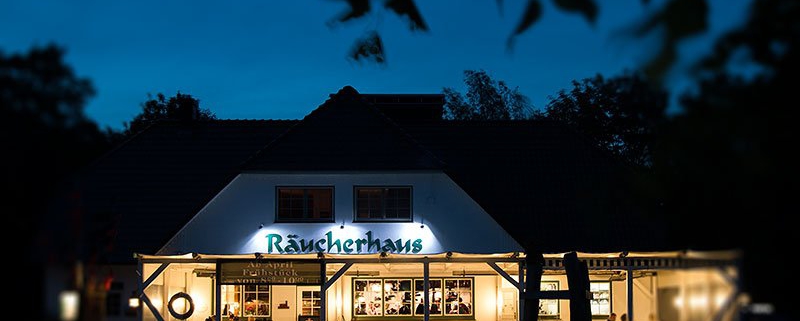
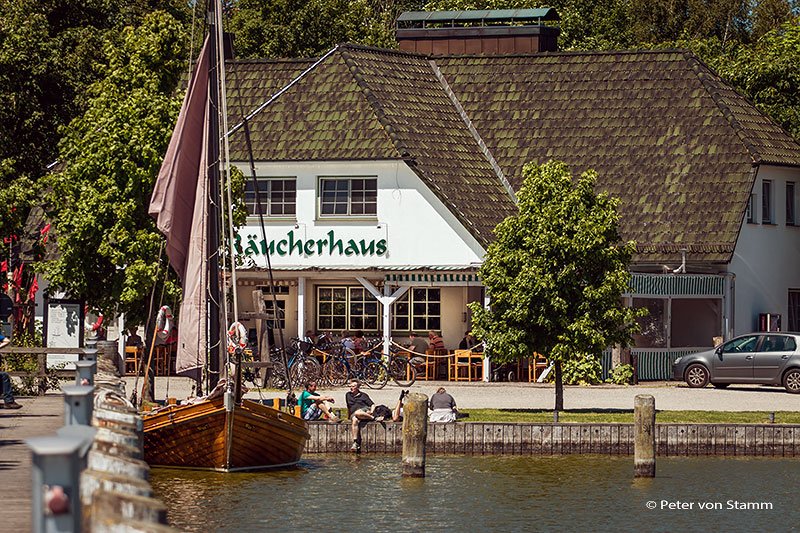

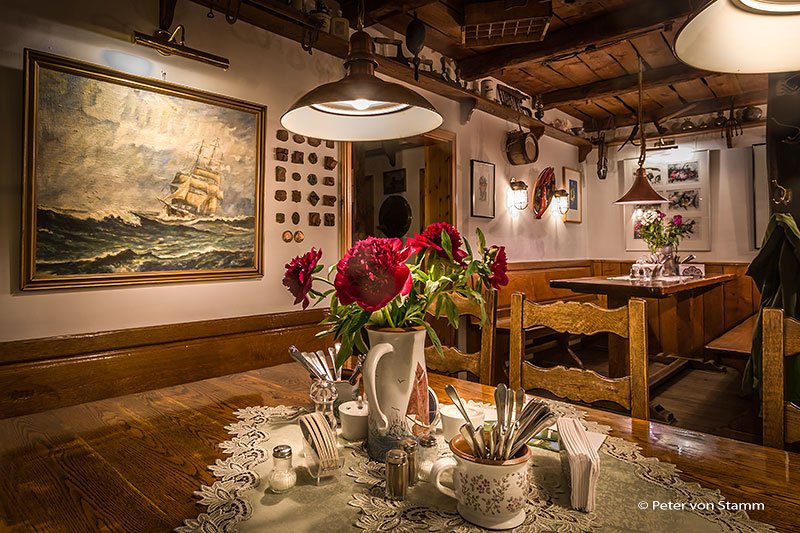
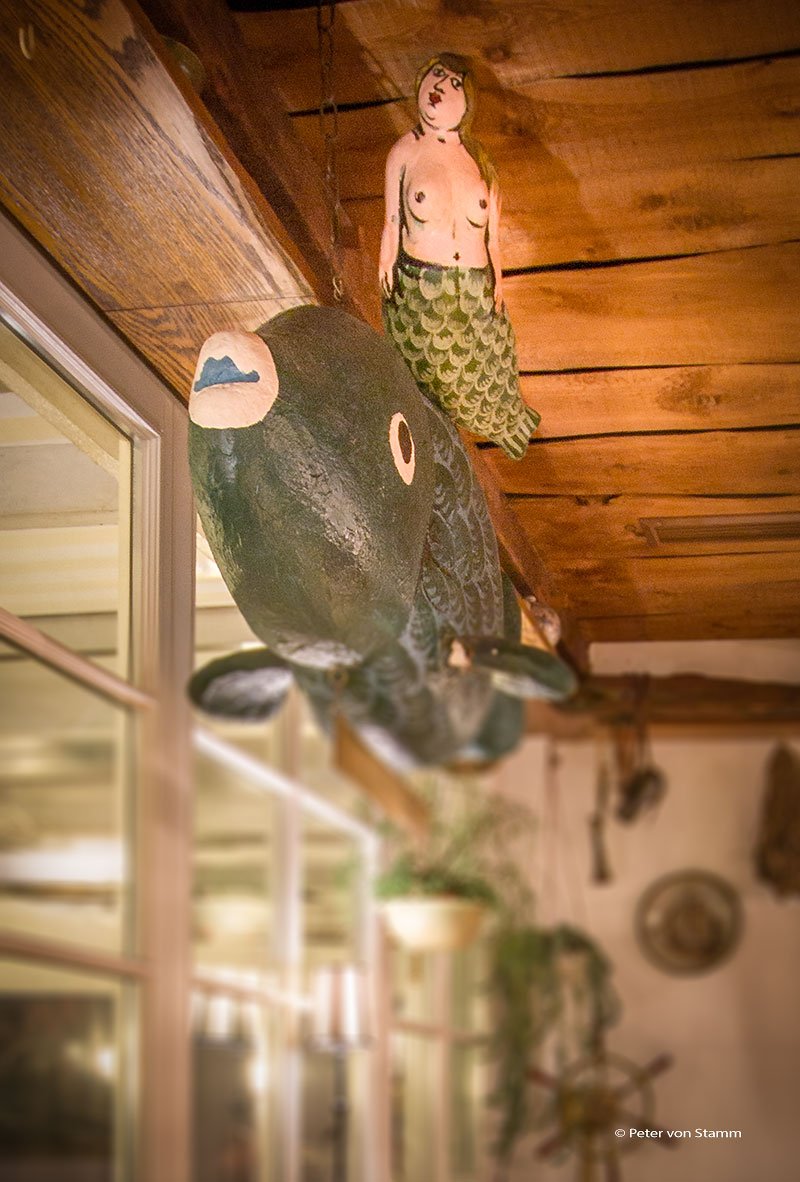
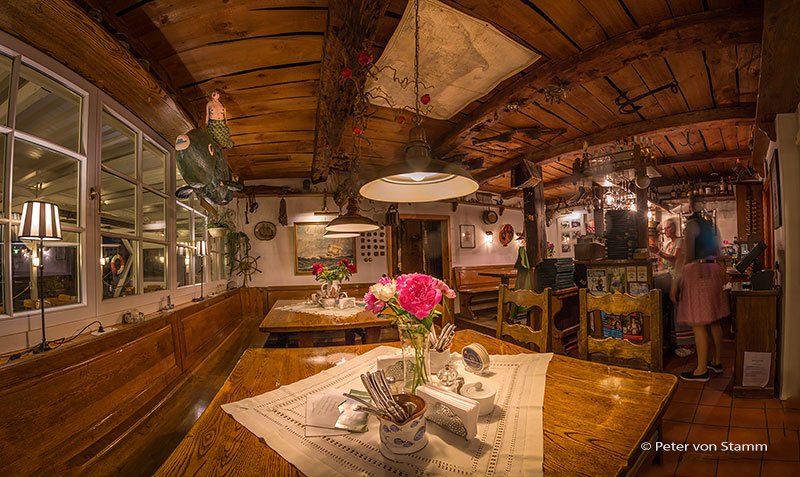
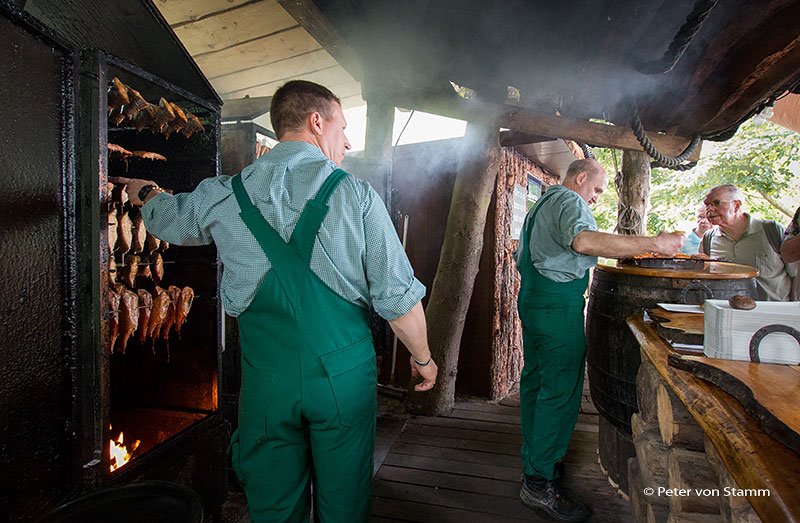

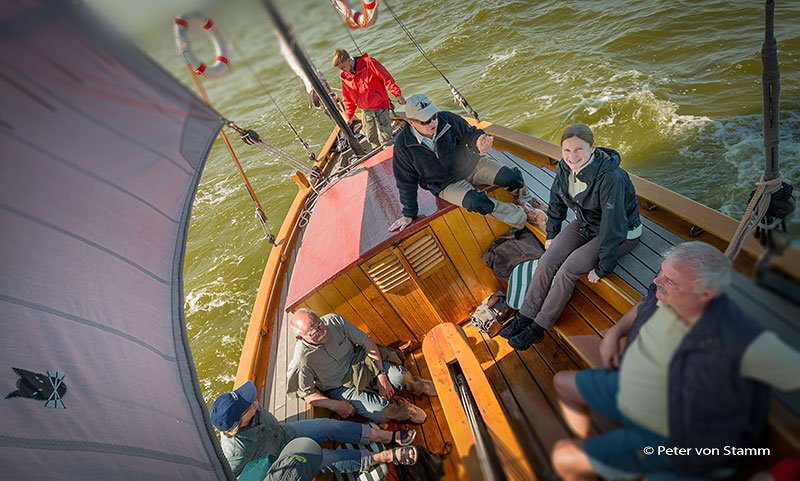

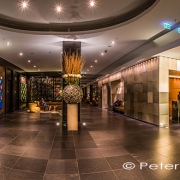
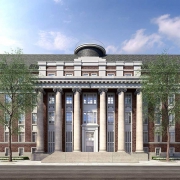
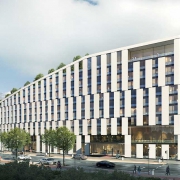
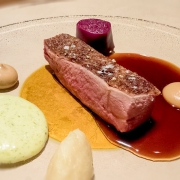






 Hyatt
Hyatt